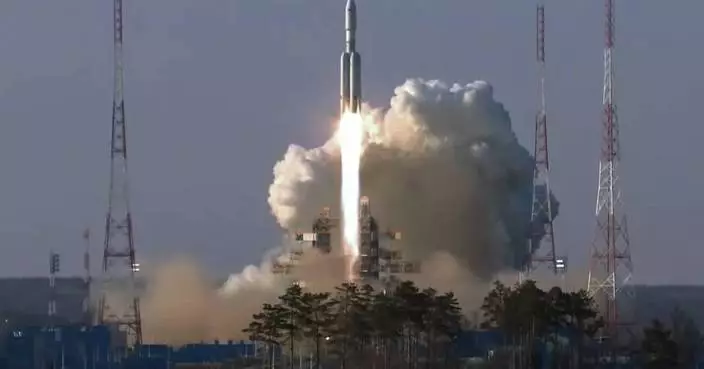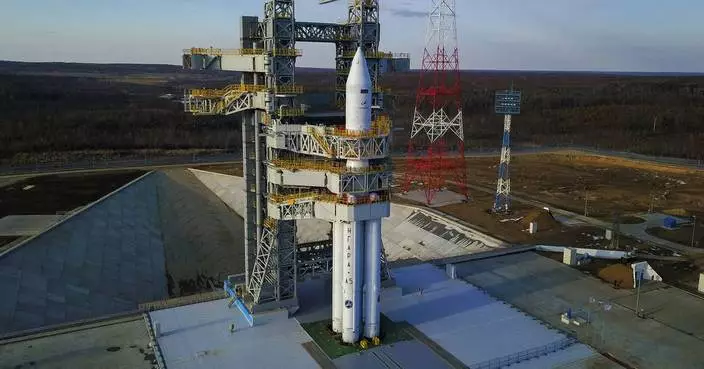Brad Gibson, head of physics at the University of Hull, has revealed why we saw such a remarkable sight.
The skies above Los Angeles were alight with a remarkable sight as SpaceX launched a satellite into orbit on its Falcon 9 rocket.
Click to Gallery
Brad Gibson, head of physics at the University of Hull, has revealed why we saw such a remarkable sight.
So what caused the stunning display of light? Well, Brad Gibson, head of physics at the University of Hull, has the scientific explanation.
“It certainly was spectacular and it led to a massive spike in Google searches for the phrase ‘UFO’, because it gave that sort of visual appearance.
Fortunately, Los Angeles mayor Eric Garcetti took to Twitter to assuage any concerns of paranormal activity.
While propelling the SAOCOM 1A satellite into orbit, the launch also saw the Falcon 9 rocket’s first stage booster land back at SpaceX’s California launch site for the first time on the US West Coast.
A burst of light could be seen over the Californian city for a number of minutes as the spacecraft, an Argentinian Earth-observation satellite, detached from its booster in the night sky.
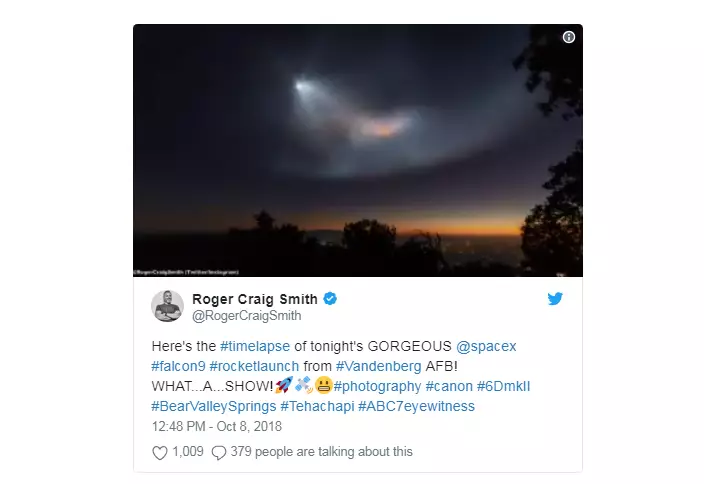
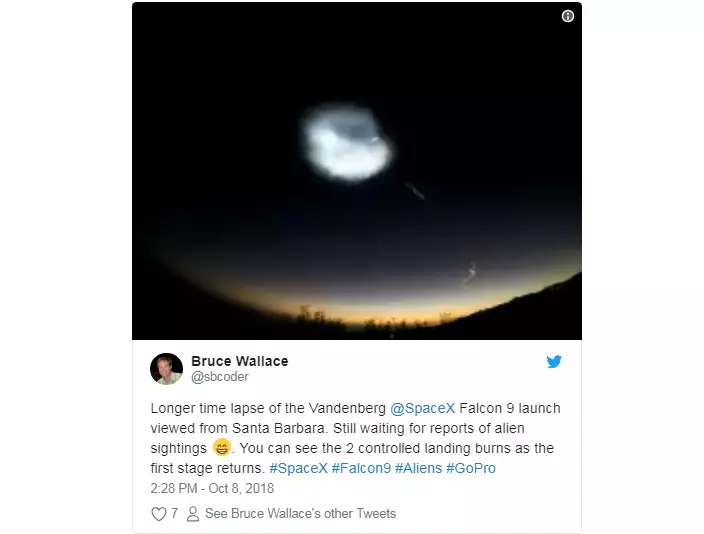
So what caused the stunning display of light? Well, Brad Gibson, head of physics at the University of Hull, has the scientific explanation.
“You are seeing the same effect as one sees in planes, ie contrails forming – ice crystals condensing out of the exhaust vapour,” Brad told the Press Association.
“In this case, this was happening high enough in the atmosphere that, while to us on the surface the Sun had set 30 minutes earlier, up there, the ice crystals get lit up by the Sun, giving us a spectacular display down here on Earth.

“It certainly was spectacular and it led to a massive spike in Google searches for the phrase ‘UFO’, because it gave that sort of visual appearance.
“Elon Musk does these night-time launches for this exact purpose. He is a master in getting us to talk about SpaceX and Tesla.”
Indeed, many onlookers from the ground were stunned by what they were seeing.

Fortunately, Los Angeles mayor Eric Garcetti took to Twitter to assuage any concerns of paranormal activity.

While propelling the SAOCOM 1A satellite into orbit, the launch also saw the Falcon 9 rocket’s first stage booster land back at SpaceX’s California launch site for the first time on the US West Coast.
The landing of the booster is part of efforts by the space transportation service to cut the cost of space launches by re-using rockets.
The company, owned by Elon Musk, posted a video of the Falcon 9’s launch and successful return.

The satellite launched by Falcon 9 is the first of two for Argentina’s space agency, Comision Nacional de Actividades Espaciales.
The SAOCOM 1A carries a high-resolution instrument called a synthetic aperture radar, which will be used to try to monitor and predict the severity of natural disasters.
It will be followed by SAOCOM 1B in 2019.
TOKYO (AP) — Japan’s space agency announced Friday a plan to launch a major upgrade to its satellite imaging system, as a new flagship rocket is put to the test for a third time.
The Japan Aerospace Exploration Agency that an H3 rocket will be launched from the Tanegashima Space Center, on a southwestern Japanese island, early afternoon on June 30, with a launch window that runs through the end of July.
The rocket will be carrying an Advanced Land Observation Satellite, ALOS-4, tasked primarily with Earth observation and data collection for disaster response and mapmaking, as well as with monitoring military activity, such as missile launches, with an infrared sensor developed by the Defense Ministry. The ALOS-4 is a successor to the current ALOS-2 and can observe a much wider area.
The launch will be the H3's third, coming after a failed debut in March 2023 and a successful launch on Feb. 17. During the first attempt, the rocket's second stage engine did not ignite and the rocket had to be destroyed along with its main payload, a satellite that was supposed to be the ALOS-3.
During H3 No. 2's successful test flight, it carried two commercially-developed observation microsatellites and an ALOS mockup.
JAXA and its main contractor Mitsubishi Heavy Industries have been developing H3 as a successor to its current mainstay, H-2A, which is set to retire after two more flights. MHI will eventually take over H3 production and launches from JAXA and hopes to make it commercially viable.
Japan sees a stable, commercially competitive space transport capability as key to the country's space program and national security.
The 57-meter (187-foot) long H3 rocket is designed to carry larger payloads than the H-2A at about half its launch cost.

FILE - JAXA H3 rocket project managers Masashi Okada, right, and Mayuki Niitsu brief journalists in front of the second stage of a H3 rocket, set for a full-fledged launch later this year after two test flights, inside the Mitsubishi Heavy Industries' Nagoya Aerospace Systems Works Tobishima Plant in Tobishima, Aichi prefecture Thursday, March 21, 2024. Japan’s space agency announced Friday, April 26, that it will launch its new flagship rocket H3 on June 30 carrying an observation satellite for disaster response and security purposes, a key mission that it had failed in its debut flight last year. (AP Photo/Mari Yamaguchi, File)
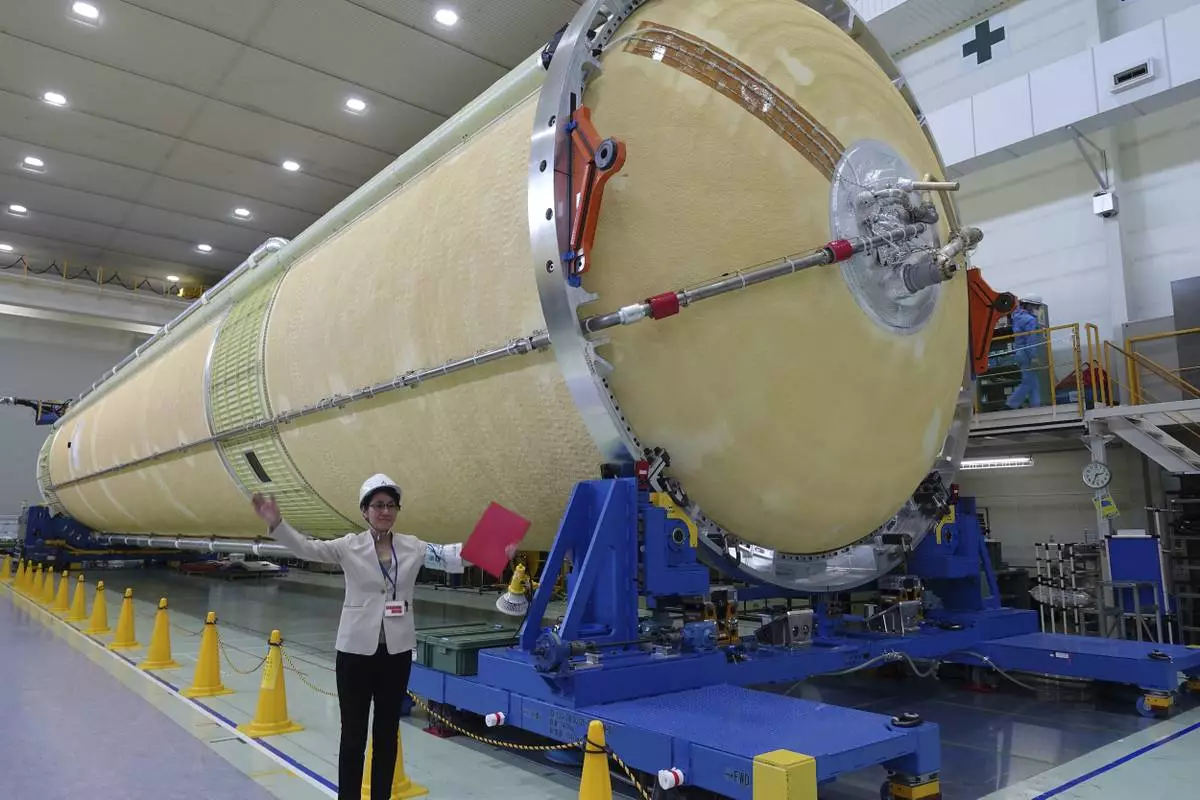
FILE - A Mitsubishi Heavy Industries staff member stands next to the top of the first stage of a H3 rocket, inside the Mitsubishi Heavy Industries' Nagoya Aerospace Systems Works Tobishima Plant in Tobishima, Aichi prefecture Thursday, March 21, 2024. Japan’s space agency announced Friday, April 26, that it will launch its new flagship rocket H3 on June 30 carrying an observation satellite for disaster response and security purposes, a key mission that it had failed in its debut flight last year.(AP Photo/Mari Yamaguchi)













